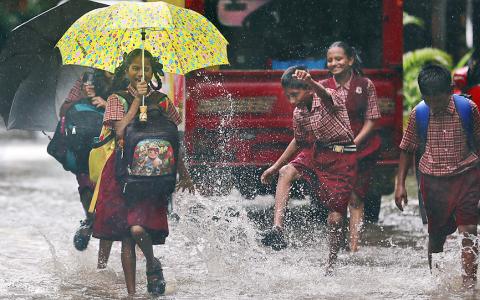The all-important monsoon forecast becomes a national priority, with more than 70 percent of India’s 1.25 billion citizens engaged in agriculture and relying on weather predictions to decide when they will sow their seeds and harvest their crops. However, getting the forecast right remains a challenge, thanks to the complex — and still poorly understood — ways in which South Asia’s monsoon rains are influenced by everything from atmospheric and ocean temperatures to air quality and global climate trends. Even the amount of ice in Antarctica is suspected to have an impact. And it is only getting harder to figure out, scientists say, as the monsoon becomes increasingly erratic.
A new study released on Friday in the journal Science Advances helps clear up a bit of the mystery, by showing that human-induced climate change is responsible for most of the change seen in ocean surface temperatures near the equator across Asia, which in turn affect regional rainfall patterns including the Indian monsoon. By showing that link, the study indicates future ocean warming in the region, which could in turn increase the amount of rainfall during monsoons, strengthen cyclones and increase precipitation over East Asia. “This has important implications for understanding changes in rainfall patterns for a large, and vulnerable population across Asia,” said oceanographer Evan Weller, who led the research team while he was at Pohang University of Science and Technology in South Korea, before recently shifting to Monash University in Australia.
Indian school children play in a flooded street in Mumbai, India
The study looks specifically at a mid-oceanic body called the Indo-Pacific Warm Pool, which holds some of the world’s warmest seawaters and spans the western Pacific Ocean to the eastern Indian Ocean. Scientists have long known that India’s monsoons are partly influenced by that warm pool. And they have known that the pool has been expanding — and warming — for decades. That expansion and warming have already caused some sea rise around islands in Asia. It was not entirely clear why the pool was changing, until now.
Weller and his team compared data observations with several climate models, and deduced that rising greenhouse gases along with aerosols and other atmospheric pollutants were the dominant cause of the pool’s warming and expansion over the past 60 years, though regional climate variations also had some effect. “This was not entirely surprising. We have long suspected climate change to be behind the changes, but no one had yet proven it,” Weller said. What they did not expect was to find that the western portion of the pool, near India, was expanding more than the eastern part in the Pacific. “We don’t really know why. We’ll try to figure that out next,” Weller said.
MORE



